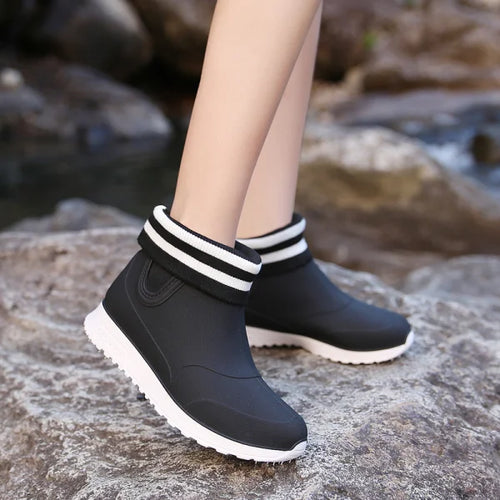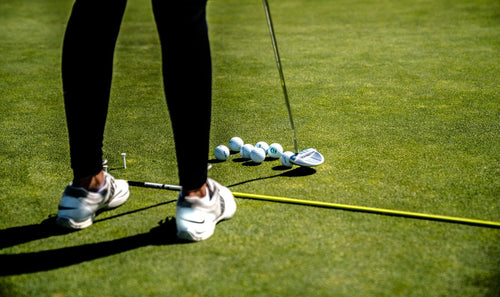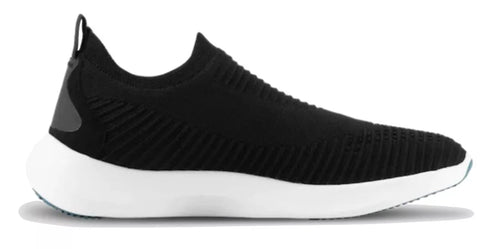No longer do you feel fresh and snazzy with your once-glorious sneakers. Now, all eyes are on you only because of that rhythmic creak emanating from your kicks with each step— like you’re a cartoon character.
But while squeaky shoes may not have any use outside of prop comedy, you don’t have to throw yours away just yet.
Here is everything you can try to silence squeaky sneakers once and for all (or at least once a month).
Problem 1: Shoes Have Not Been Broken in Yet
Squeakiness is an all-too-common problem for new shoes that have not been broken in properly. Running shoes, especially, require some initial time to conform to the shape of your feet.

However, most people don’t realize that breaking in new shoes is about more than just making them fit you properly. Instead, the break-in period also allows the materials and the various parts of your shoes to settle so they don’t start squeaking later on.
Diagnose the Problem
If your shoes are relatively new, then their squeakiness is probably because of their age. Generally, new sneakers require between two to four weeks to break in properly.
Still, not all new shoes require breaking in.
Take, for example, an instance where you are simply repurchasing a pair of sneakers that are tried and tested by you. You did not turn to a new brand, new model, or even a new size. Additionally, you know that your old pair of sneakers never had a squeaking problem.
In this instance, you should not require such a long breaking-in period.
However, if you are trying out an entirely new pair of shoes altogether, then they will need a longer time to reach their optimum performance capacity.
Solution
When the problem is with shoes that haven’t been worn in properly yet, then all you have to do is break them in.
It’s pretty simple:
- Take the shoes out of the box and unlace them properly.
- Put on your everyday running socks. The socks will help give an extra bit of stretch.
- Slide into the shoes and lace them so that they are not too tight or loose.
- Walk around the house or the block for a while. Gradually increase the distance and time of walking.
- Make sure you air out your shoes between each short walk.
Problem 2: Insoles Are Moving Around
Waterproof running shoes typically come with removable insoles. This is because some people require supportive insoles such as ortholite. Others may require some additional arch support because of the shape of their feet.
Either way, insoles aren’t firmly attached to the shoes.
In ideal cases, the sneaker will be so perfectly built that the insoles don’t budge at all. Other times, however, the insole might have some trouble staying in place.
So, the squeaky sound you’re hearing might be because of the loose insoles rubbing against the inside of your shoes.
Diagnose the Problem
You can determine whether your insoles are the cause of that annoying squeaking in one of two ways.
First, you can always check your insoles using your hands. If you can move the insole around easily without pinching it, then the insoles are definitely too loose. As you move them around, you should be able to hear a familiar squeaking.
But other times, your eyes can deceive you. While the insole may appear firmly in place, it can still move around ever so slightly as you walk or run.
In this case, you need to wear your shoes and try moving your feet around with as little contact with the floor as possible. For example, you can pivot your feet around the balls and heel and go back and forth between the two.
If the shoes are squeaking, then the problem is less likely with the floor and more likely with the insoles.
Solution
While it may seem counterintuitive, the only way to stop the squeaking emanating from rickety insoles is by applying lubricant to them. Think about it as oiling old door hinges.
Here’s how you can use the multi-purpose WD-140 lubricant for your squeaky insoles:
- Remove the sock liner.
- Generously coat the surface beneath the insole with WD-140.
- Let the shoe air dry for at least one day.
- Spray another layer of WD-140.
- Let air dry again before inserting the insole and sock liner.
- You will have to repeat this process whenever your insoles start squeaking again.

Problem 3: Friction Between the Floor And Shoe
Whenever you hear your shoes squeaking, you immediately sus the floor.
Indeed, slick and smooth surfaces such as hardwood floors could be the root cause of squeaky waterproof running shoes.

More specifically, the bottoms of your shoes create excessive friction against the floors. This mostly happens because new shoes have a spray-on solution on top of the soles to make them look new and shiny.
Squeaky shoes against slick floors are most problematic for gymmers. Unless the gym floor is carpeted, the diverse movements during cardio burnouts or lifting sessions can cause both you and your shoes to squeal.
Diagnose the Problem
In order to make a scientific diagnosis, you need to have a control surface. In other words, try walking in your shoes on different surfaces and see if any particular surface exacerbates the squeaking.
The control surface that you are using will be something soft and dense like a carpet. If there is no other problem, the shoes should not squeak against a carpeted floor.
With that in mind, the problem is probably not the friction between the floor and shoes if the squeaking persists while walking on carpet.
Solution
There are multiple ways you can overcome the deadly combination of squeaky soles and uncooperative floors. Some methods include:
- Duct taping the outsoles of your shoes.
- Using sandpaper on the soles to shave off the slick top layer.
- Spraying some lubricant like the WB-140.
Problem 4: The Shoes Are Not Completely Dry
One of the main reasons for squeaky shoes is trapped moisture. Whenever shoes are even slightly wet, they tend to be extra noisy with the smallest movement.
Wet shoes are particularly more squeaky if they have an absorbent outsole or a non-waterproof upper.
Diagnose the Problem
You should be able to tell pretty easily that your shoes are not completely dry.
If you didn’t already know, shoes could take up to two days out in the open to dry completely after a wash. Even if there are no visible wet patches on the surface, the padding inside the heels and insoles can still be considerably moist.
On the other hand, your otherwise waterproof running shoes may be retaining moisture because of your sweat. You should be able to tell that the shoes are moist by feeling the inside or the sock liner.
Solution
- Invest in shoes that are waterproof, quick-drying, and moisture-wicking, like Loom waterproof running shoes. The combination of these properties ensures that your shoes expel any and all moisture as quickly as possible.
- Let shoes completely dry after you wash them.
- Air out the shoes every time you go for a run. A better alternative is alternating between running sneakers every day so that each pair can dry out completely.
- Always wear socks before you wear your shoes, so your socks absorb most of the sweat.
Check out Loom products here >>
Problem 5: Some Shoe Parts Are Coming Loose
Old waterproof running shoes can become squeaky just as old houses start to creak. And just as old houses have crumbling foundations to blame, old shoes have similar troubles.
In other words, some shoes start falling apart over time. Even if it happens subtly, the result is not so subtle. On the contrary, things like loose outsoles, unhinged heels, and broken toe boxes can cause a lot of squeaking.
Diagnose the Problem
You will have to inspect your shoes very thoroughly. Keep the following most vulnerable areas in mind:
- Look at the outsole. Whether the outsole is stitched or glued to the midsole, it can always have a broken seam.
- Check the toe box, especially around the bottom area.
- Investigate whether the heel has come off from someplace.
Solution
When it comes to shoes that are falling apart, you can always try fixing them yourself at first. For example, you can superglue the heels and outsoles back into place easily.
However, your best bet is to take your beat-down sneakers to the cobbler who can provide a more permanent solution to the problem.
Conclusion
If your waterproof running shoes have started to squeak, it doesn’t necessarily mean that it's time to retire them. Instead, it could just be a sign of trapped moisture and unlubricated shoe parts.
That being said, it is also entirely possible that there is some defect in the shoes that make them squeak. In this case, you need to take the shoes back to the store and claim your warranty.
But remember: your best bet is always to take your shoes to the cobbler. These professionals will have an instant and long-lasting fix for squeaky sneakers so that the sneakers can live up to their name.
No More Squeaking, Just Comfort Walking! Discover Loom's Breathable and Non-Squeaking Sneakers for Your Daily Journeys


























